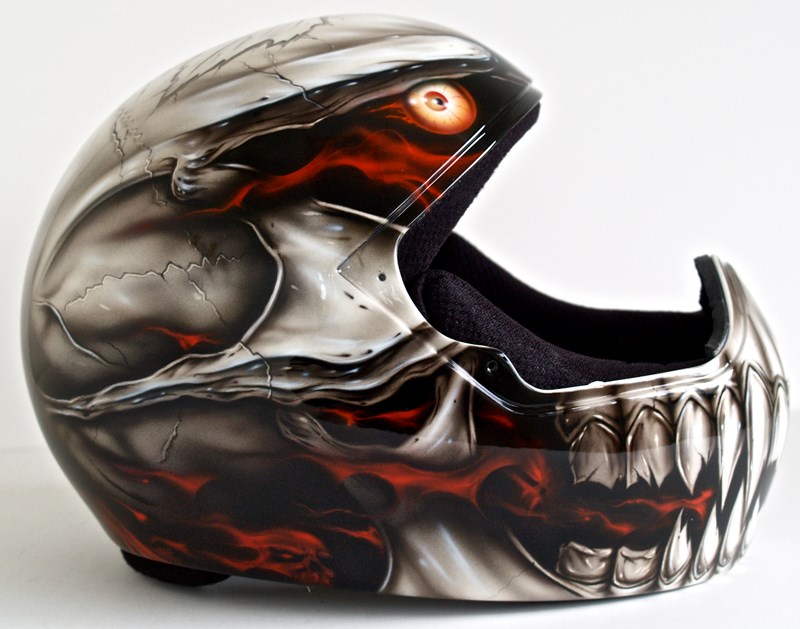
When Canadian Olympian Eric Neilson careens face-first down the skeleton track at this year’s winter Olympics, an angry demon will grin from the front of his helmet.
Neilson, along with fellow skeleton racer Sarah Reid, will sport custom-painted helmets at the Sochi winter games. The intricate works of art are still a fairly new phenomenon to skeleton racing, and Canada’s athletes have Jasper’s own Jason Bartziokas to thank for theirs.
Bartziokas has been painting helmets and masks for more than 15 years.
He started as a way to pay the rent while getting a degree at the Alberta College of Art and Design, and “it just kind of snowballed from there.”
He’s seen his work pop up on goalie masks during Hockey Night in Canada, on skeleton helmets at the Turin Olympics in 2006, as well as across the Western Hockey League.
These latest works, however, stick out for him.
“I was pretty confident that the helmets would get some publicity or notice around the Olympics,” he said. “It’s a unique element of the sport, [and] the paint jobs were strong.”
What did surprise him was how soon people started taking notice. Bartziokas said he’s been “pleasantly surprised” with how much exposure his art seems to be getting. He said he’s seen pictures of the helmets pop up on several social media websites, including Reddit and Yahoo.
“It’s getting around, which is pretty cool,” he said.
The detail on Bartziokas’ masks is stunning: the flames spilling from the demon face on Neilson’s helmet form an ethereal skull at its rear, and the maple leaves on Reid’s seem to shoot from the surface.
But to hear Bartziokas tell it, such intricate detail somewhat bucks the industry trend. Older wisdom dictates that masks should be bright and bold, able to be seen from the second deck of the arena, not so detailed they can only be appreciated from inches away.
But Bartziokas didn’t just slap paint around without considering his medium; he put a lot of thought into the helmets’ designs.
“The top part of the head is the focal point,” he said, explaining how he anchored the skeleton helmets with big, bold graphics on the very top, and accented them with more detailed work on the sides and back.
And his clients seem to appreciate it: Eric Neilson gushed about his lid in a blurb on the Canadian Olympic team’s website.
“I’m not artistic at all, so all I had was an idea that I wanted a scary skull design, and Jason pretty much ran with it. He gets all the credit for it. He went above and beyond what my expectations were.
I do think he made a helmet that embodies me perfectly,” he said.
Part of that is Bartziokas’ talent, but another is his process, part of which is taking a dive into the mind of his clients and “playing psychiatrist” to tease out a design that best suits them.
After that, it’s all sanding, taping, painting and polishing: a time-consuming process that takes a week per helmet.
Despite that, Bartziokas admitted skeleton helmets are some of his favourite to paint, because they offer so many possibilities. Goalie masks and ski helmets have a lot of vents and clips that end up covering his work. But the skeleton helmets are essentially a blank canvas.
“You kind of lose a little bit of what you put into the other ones, whereas a skeleton helmet you really see everything—which is great,” he said.
Continuing to buck trends, Bartziokas doesn’t really have an official business: if you want to get a helmet painted by him you have to find him through Twitter, Instagram or word of mouth.
“At this point I kind of want to let the work speak for itself,” he said.
Trevor Nichols
[email protected]
